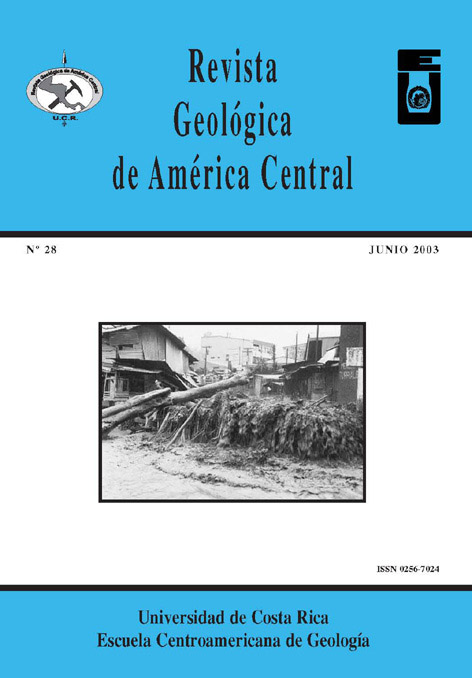Abstract
The Tulín Formation extends over 1200 km2 in the central-western part of Costa Rica. Basalticrocks prevail in this formation, whose main characteristics are vesicular pillow structures, and micro-doleritictextures, composed of plagioclase, augite, olivine, and opaque minerals, with geochemical characteristics of E-MORB type. Gabbros of the Tulín Formation are similar in geochemistry to the basalts, however, near to Turrubares and San Jerónimo hills there are different geochemical types. Olivine cumulates (Fo85) are the thirdtype of igneous rocks observed in Tulín Formation, occurring in small and rare outcrops all over the region andshowing geochemical affinity with the basalts. Epiclastic sediments, inter-layered with the basalts are rich injuvenile volcanic fragments and fossils related to the photic zone (large foraminifera and rudists). The POC(Caribbean Oceanic Plateau) forms the basement over which Tulín Formation lies. This latter was originated inseamounts that emerged oceanic islands on laps of the POC between Maastrichtian and Early Eocene age. Inprevious works the Herradura Terrain was considered as part of POC. While POC basalts are poor in LFSelements and their REE pattern is typical of plateau basalts ((La/Yb)cn ≈ 1,0), rocks from Tulín Formation arerich in LFS elements, and show a REE pattern characteristic of E-MORB ((La/Yb)cn ≈ 3,3). Under this premises,only the western part of Herradura Terrain belongs to the POC. The Quepos basalts (≈ 66 my) as well, could begeochemically and temporally correlative to Tulín Formation.##plugins.facebook.comentarios##
Downloads
Download data is not yet available.






